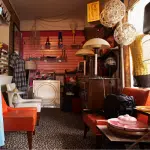
Peru’s Machu Picchu reopening Sunday after pandemic closure
MACHU PICCHU, Peru — Except workers repairing roads and signs, Peru’s majestic Incan citadel of Machu Picchu is eerily empty ahead of its reopening Sunday after seven months of closure due to the coronavirus pandemic.
The long closure of Peru’s No. 1 tourist draw, which has hammered the local economy, marks the second time it has been shut down since it opened its doors to tourism in 1948. The first time was in 2010 when torrential and prolonged rains forced it to close.
The stone complex built in the 15th century will receive 675 visitors a day starting Sunday, the director of Machu Picchu archaeological park, José Bastante, told The Associated Press during an exclusive visit to the near-empty ruin ahead of its reopening.
“We have a limited 30% admission capacity in compliance with biosafety measures and protocols,” Bastante said while supervising final preparations to open the UNESCO World Heritage Site.


